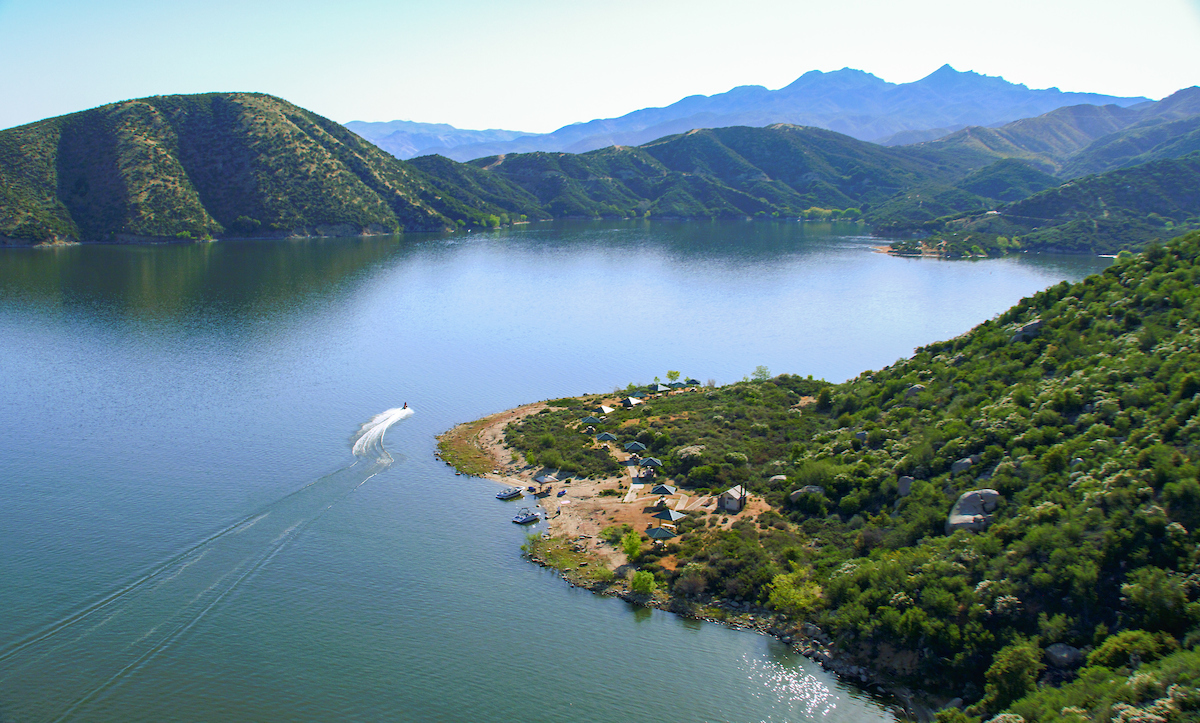An aerial view of Silverwood Lake, a large reservoir in San Bernardino County, California on May 13, 2023. 
The Department of Water Resources (DWR) is urging the public to avoid contact with water at Silverwood Lake in San Bernardino County until further notice due to blue-green algae (cyanobacteria).
A warning advisory was put in place today, and remains in effect for the entire lake until further notice. Boating is allowed, but swimming and other water-contact recreation and sporting activities are not considered safe due to potential adverse health effects. For more information on warning level advisory, go to Harmful Algal Bloom website under Advisory Signs.
Advisories are based on the potential health risks from algae. Exposure to toxic blue-green algae, also known as cyanobacteria, can cause eye irritation, allergic skin rash, mouth ulcers, vomiting, diarrhea, and cold- and flu-like symptoms. Pets can be especially susceptible because they tend to drink while in the water and lick their fur afterwards. Keep pets away from the water.
Bloom conditions can change rapidly, and wind and waves may move or concentrate the bloom into different regions of the reservoir. The algal bloom can accumulate into mats, scum, or form foam at the surface and along the shoreline, and range in color from blue, green, white, or brown.
State guidelines on cyanobacteria and harmful algal blooms recommend the following precautions be taken in waters impacted by blue-green algae:
- Do not let pets and livestock drink the water, swim through algal blooms, scum, or mats, or lick their fur after going in the water. Rinse pets in clean water to remove algae from fur.
- Avoid wading, swimming, or jet or water skiing in water containing algae blooms, scum, or mats.
- Do not drink, cook, or wash dishes with untreated surface water from these areas under any circumstances. Common water purification techniques such as camping filters, tablets, and boiling do not remove toxins.
- Do not eat shellfish from this water. For fish caught here, throw away guts and clean fillets with tap water or bottled water before cooking.
- Get medical treatment immediately if you think that you, a family member, friend, pet, or livestock might have been poisoned by blue-green algae toxins. Be sure to alert medical professionals to the possible contact with blue-green algae. Also, make sure to contact the local county public health department.
For more information, visit:
- California Department of Public Health
- State Water Resources Control Board
- CA Office of Environmental Health Hazard Assessment
- US Environmental Protection Agency: CyanoHAB website
- Centers for Disease Control and Prevention
Contact:
Maggie Macias, Information Officer, Public Affairs, Department of Water Resources
(916) 902-7405 | maggie.macias@water.ca.gov
